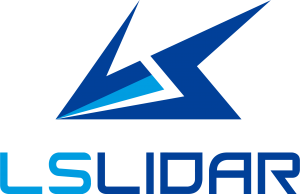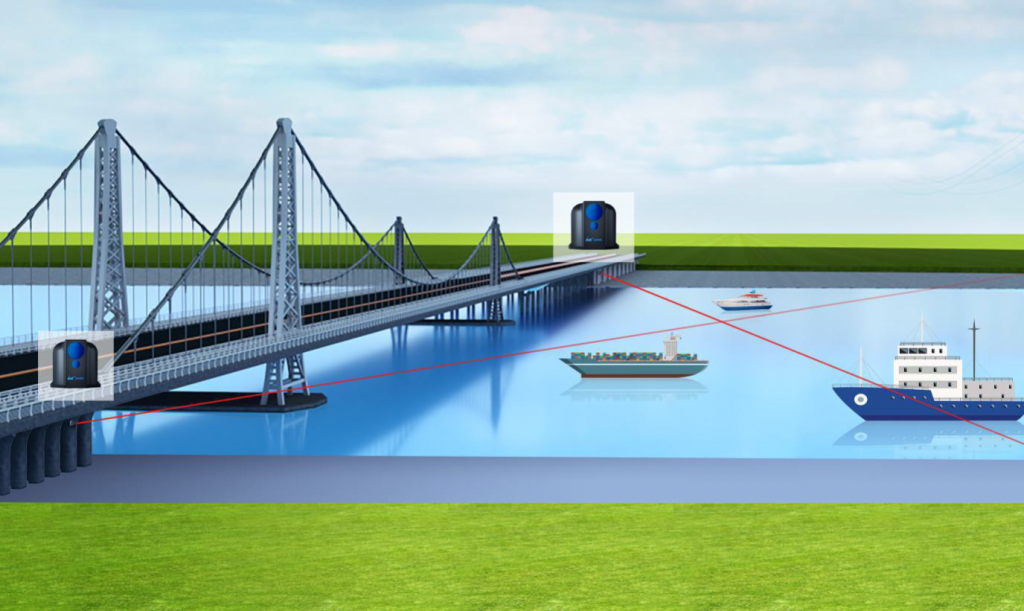
LS Bridge Anti-Collision System
Aiming at the safety of ships passing through bridge , based on the self-developed long-distance lidar LS30M, a bridge collision avoidance solution was developed by LS LiDAR, and this system have been installed more than 50 bridges and the risk of ship colliding into bridges has been significantly reduced.
Background
During the flood season, the river’s level fluctuates a lot, and the distance from the bridge to the water surface is difficult to determine, and
the distance above the waterline also changes when the ship is loaded or unloaded. It is difficult for the ship driver to determine if the ship can pass the bridge safely who can only roughly judge it based on experience. As a result, ship collision into bridge accidents have occurred frequently in the flood season for many years, which seriously threatening the safety of the bridge and ships.
System Architecture of LS Bridge Anti-collision system
The LS Bridge Anti-collision system consists of LiDAR, camera, field alarm equipment (acousto-optic equipment, LED display equipment), monitoring warning software and terminal display platform.
The core of this solution is LiDAR, which is installed on both sides of the bridge pillars. The installation height of the LiDAR is the height limit of the bridge. The two LiDARs cross to detect the ship. When the ship is higher than the height limit of the bridge, at least one of LiDARs will detect the ship and the system will output an alarm signal. And it can know the position and distance of the vessel, and issue warning in time and can send a warning to ultra-height vessel through the tweeter and large LED screen. At the same time, the early warning information is displayed in the monitoring hall or Water Administration / Police. After receiving the early warning, the maritime law enforcement department and bridge maintenance personnel will deal with the danger in a timely manner, effectively avoiding the collision of the vessel with the bridge due to the over height.
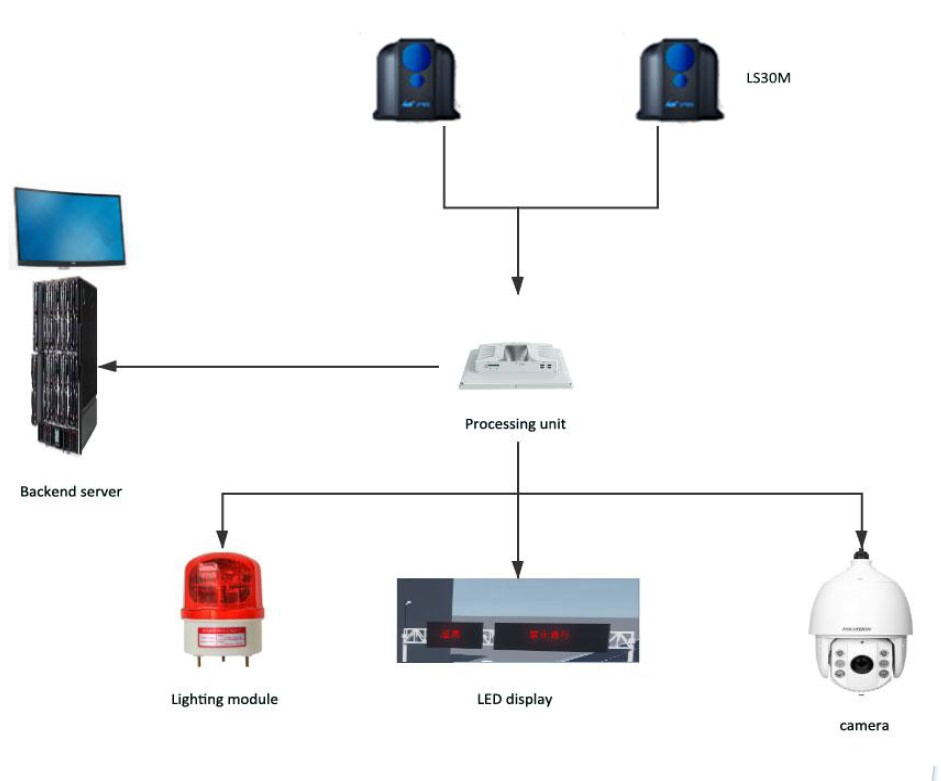
Lidar: installed it horizontally at the limited height of the pier,detects the coordinate information and movement trajectory of the passing ship within the different ranges.Also,sends out alarm in real time according to the distance, and then transmits it to the background supervision platform;
Central processing unit: used to process lidar sensor data, output alarm signals and linked cameras.
Alarm equipment: acousto-optic equipment can send out voice and light warning; LED equipment can display the distance between over-height vessel and piers ,as well as hazard warning characters.
Camera: Capture over-height target vessel by the photo for fusion purpose (Option).
System functions and Key Specifications of Bridge Anti-collision system
(1)Accurately identify super-height ships, and obtain real-time information about the position, speed, direction, track, and number of over-height ships within the monitoring range.
(2)It has the function of triggering early warning, which can carry outdifferent levels of early warning based on the comprehensive assessment of the navigation characteristics of the intruded super-height vessel.
(3)Support multiple early warning methods, not only can use sound and video pop-up windows to notify monitoring personnel in time, but also use sound, light, communication and other methods to communicate, alarm,and navigate with ships.
(4)Support the camera to automatically capture early warning pictures and track super-height ships.
Specification of the LiDAR sensor
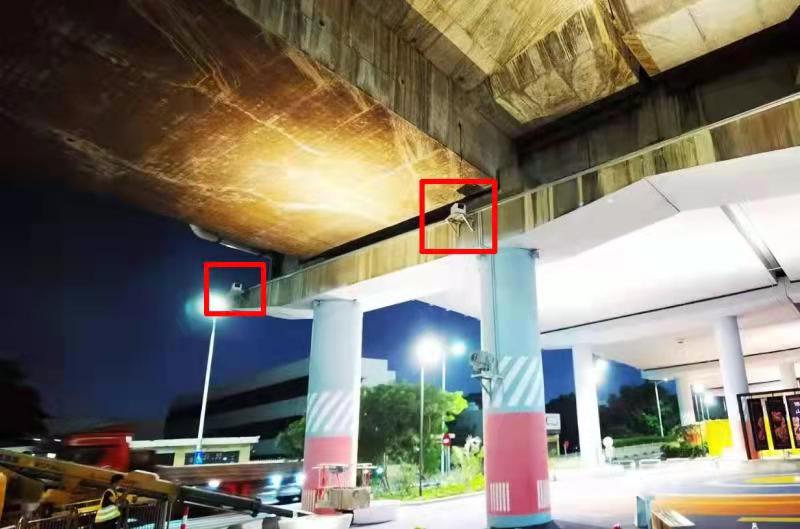
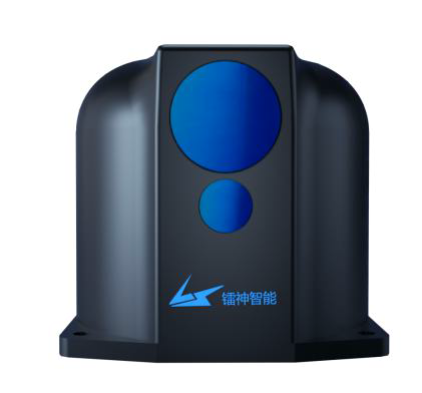
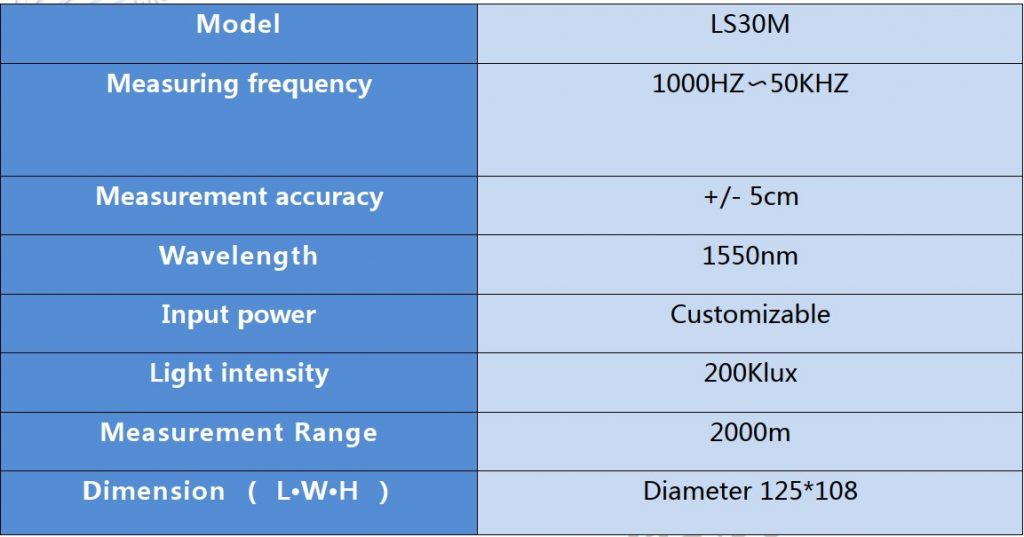
System Key Features
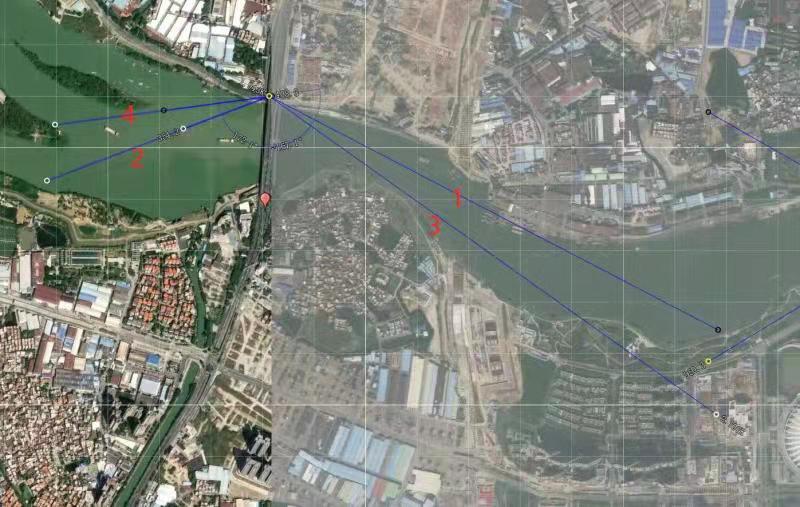
- The equipment is not affected by external light, the detection effect is good at night, and the performance is stable under the conditions of fog, rain and snow;
- The system supports RS232/422 serial communication, TCP/IP network communication, users can choose flexibly;
- The system supports real-time data transmission and provides dynamic library interface functions;
- The system has the function of self-monitoring, automatic power-off restart and automatic recovery after crash, the total recovery time is less than 1 minute.
- The system has the ability to automatically recover incoming calls and resume data transmission after interruption;
- The system is easy to upgrade, and multiple functions can be added and integrated according to user needs;
- The system supports functions such as saving and reading configuration files, and restoring factory settings;
- Active early warning: Active collision avoidance warning method, which is different from traditional passive collision avoidance buffer
- Early warning distance: long warning distance, up to 2000 m
- High sensitivity: It has the ability to recognize small targets such as masts and tower cranes, and has a low false alarm rate
- 24-hour uninterrupted monitoring: long-life and high-reliability, can work without interruption throughout the day.
